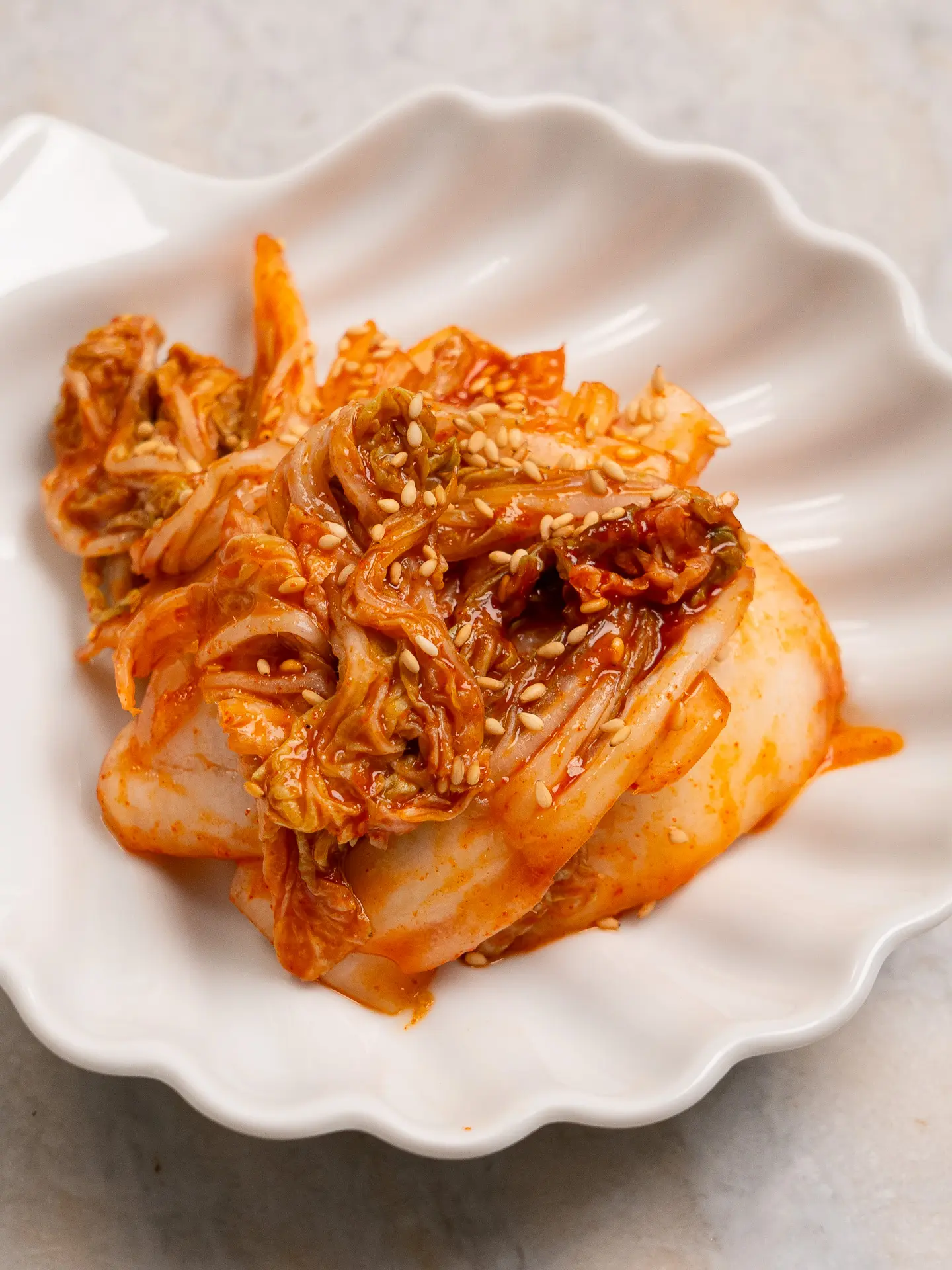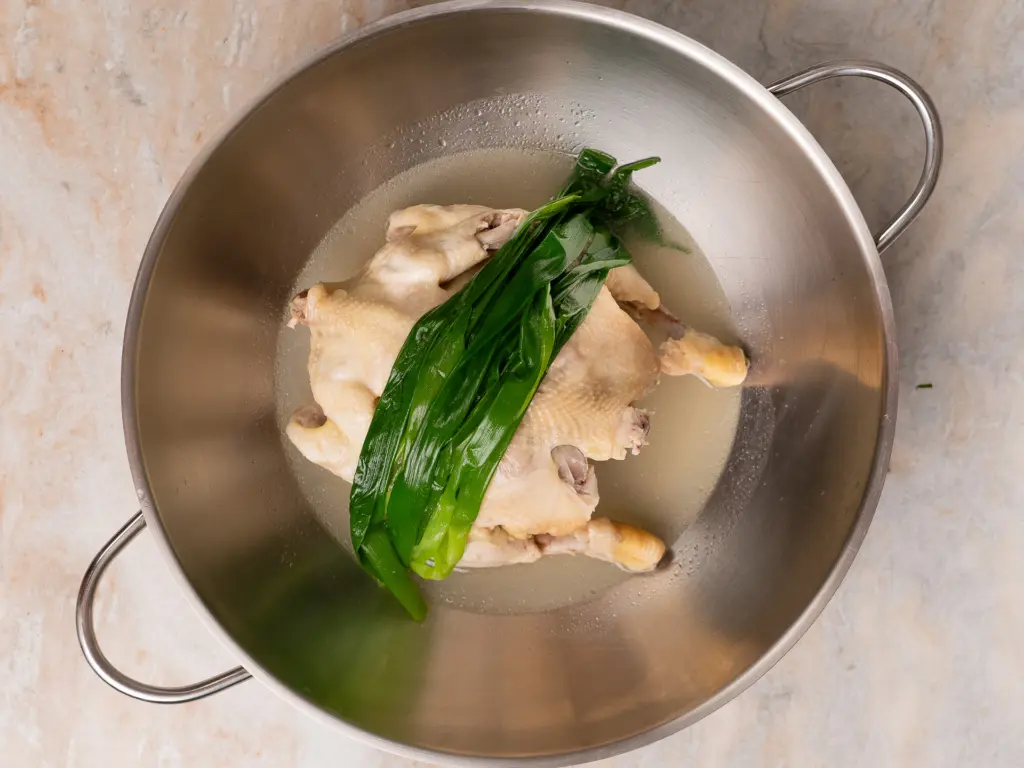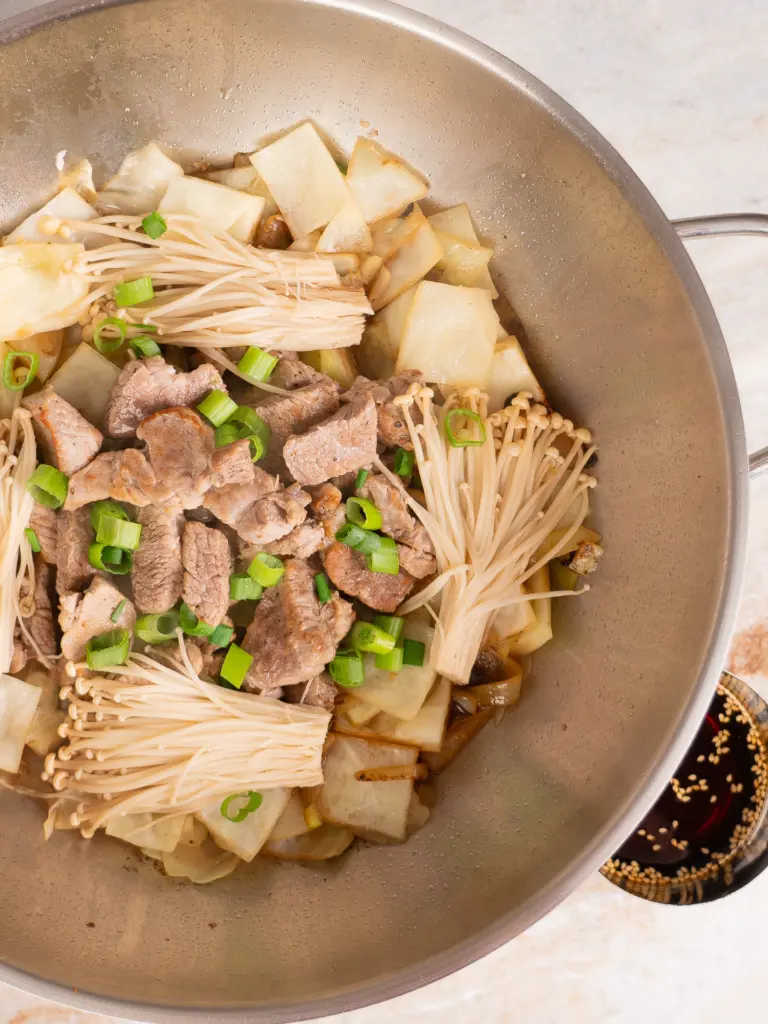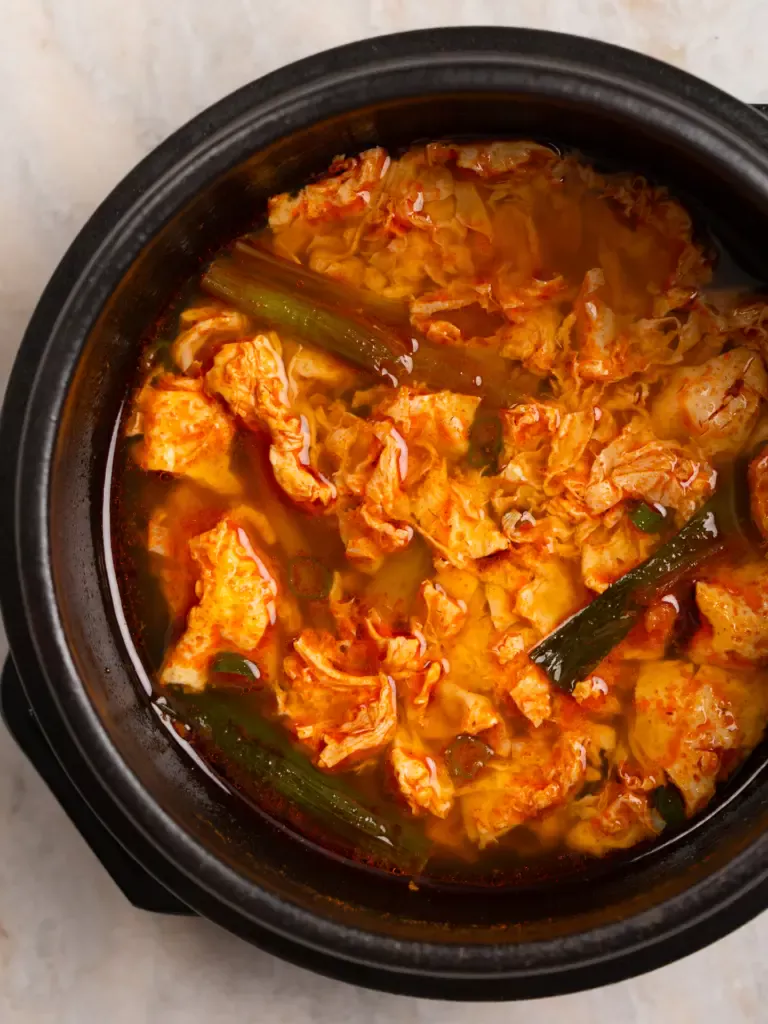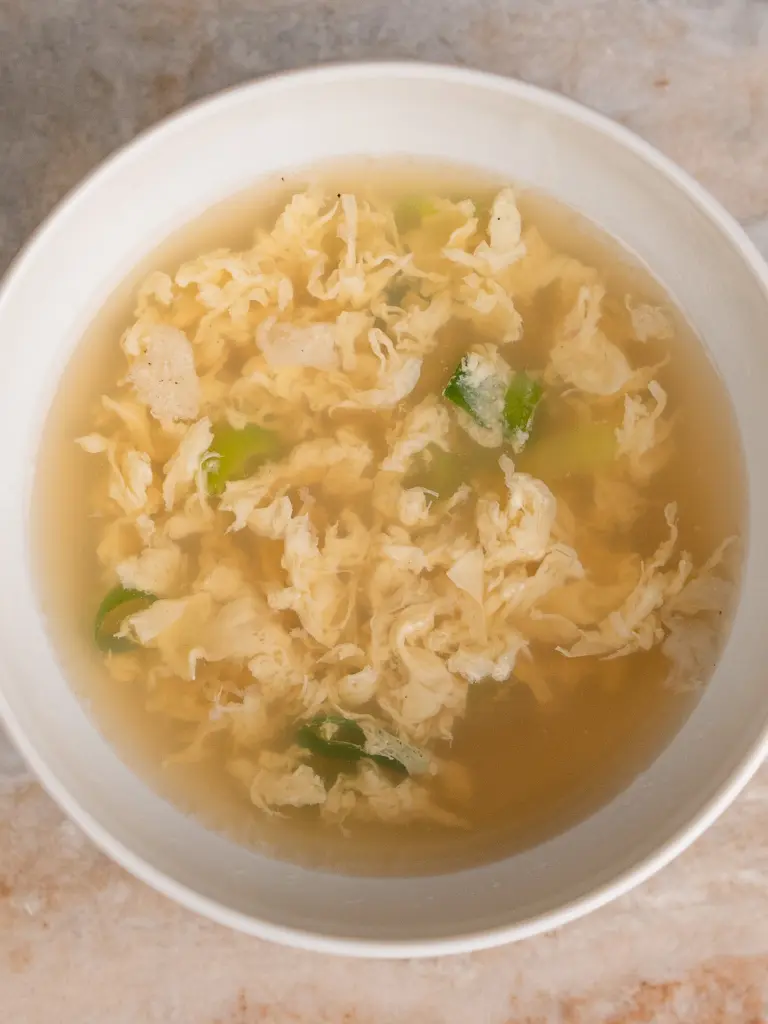Non-Fermented Geotjeori Kimchi (Quickest Homemade Kimchi)
Geotjeori is a type of fresh Korean kimchi that doesn’t require fermentation, making it perfect for beginners. Unlike regular kimchi, this quick cabbage kimchi is ready to eat in minutes while keeping its crisp texture. With simple ingredients and easy steps, you can enjoy authentic Korean taste anytime without waiting days for fermentation.
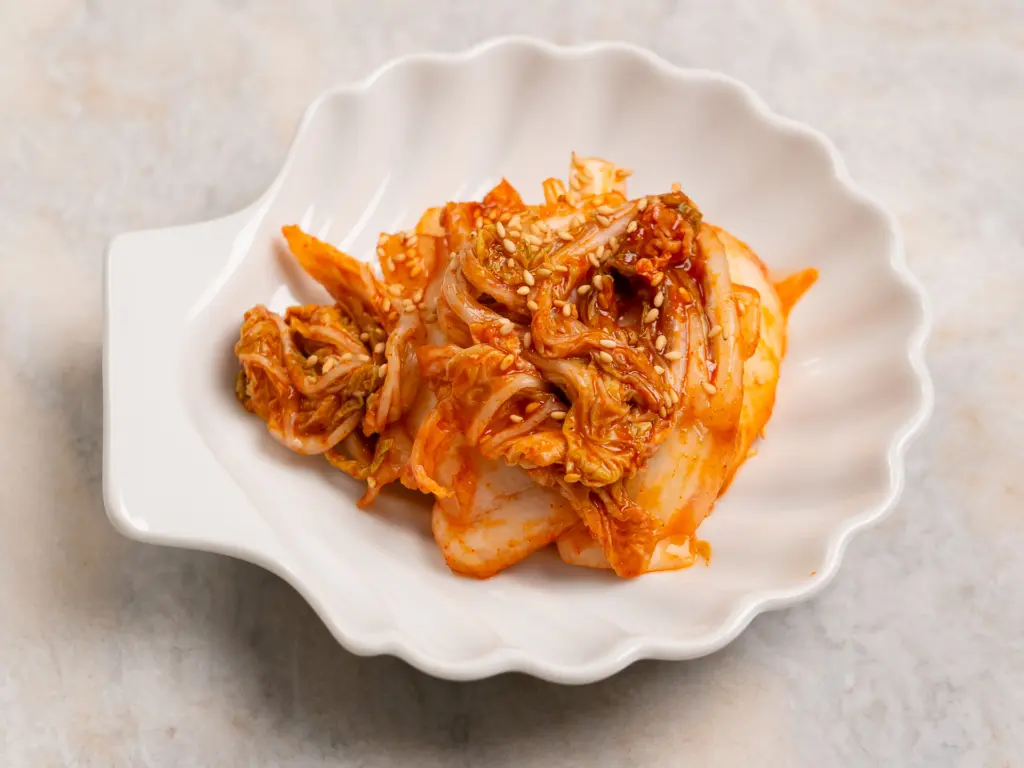
What Is Geotjeori (Fresh Kimchi)?
Geotjeori is a type of fresh kimchi made by lightly salting napa cabbage and mixing it with a spicy kimchi seasoning. Because the cabbage is only lightly salted, it can be prepared quickly, and its crisp texture is a key feature.
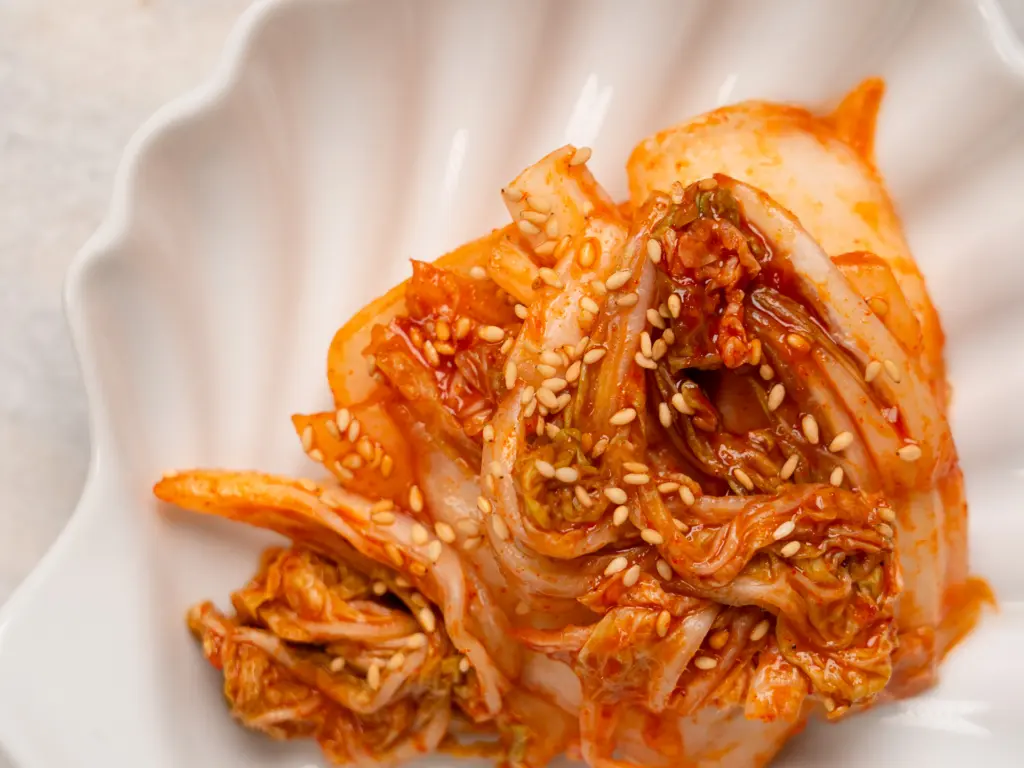
The Difference Between Fresh Kimchi and Regular Kimchi
- Salting Time: Geotjeori is salted for about 30 minutes, just enough to soften the cabbage slightly. Regular kimchi is usually salted for 10 hours or more, allowing the seasoning to penetrate deep into the cabbage.
- Texture: Since fresh kimchi (Geotjeori) is lightly salted, the cabbage remains crunchy. Regular kimchi is fully salted and fermented, making it softer and less crisp.
- Saltiness: Geotjeori uses less fish sauce than regular kimchi, so it is less salty. Regular kimchi has a higher salt content for long-term storage.
- Sweetness: Geotjeori is slightly sweeter, often made with sugar or plum syrup.
- Ingredients: Geotjeori requires very simple ingredients—just cabbage, garlic, and fish sauce. Regular kimchi typically includes a variety of fish sauces (shrimp, anchovy, etc.), ginger, radish, green onions, and more.
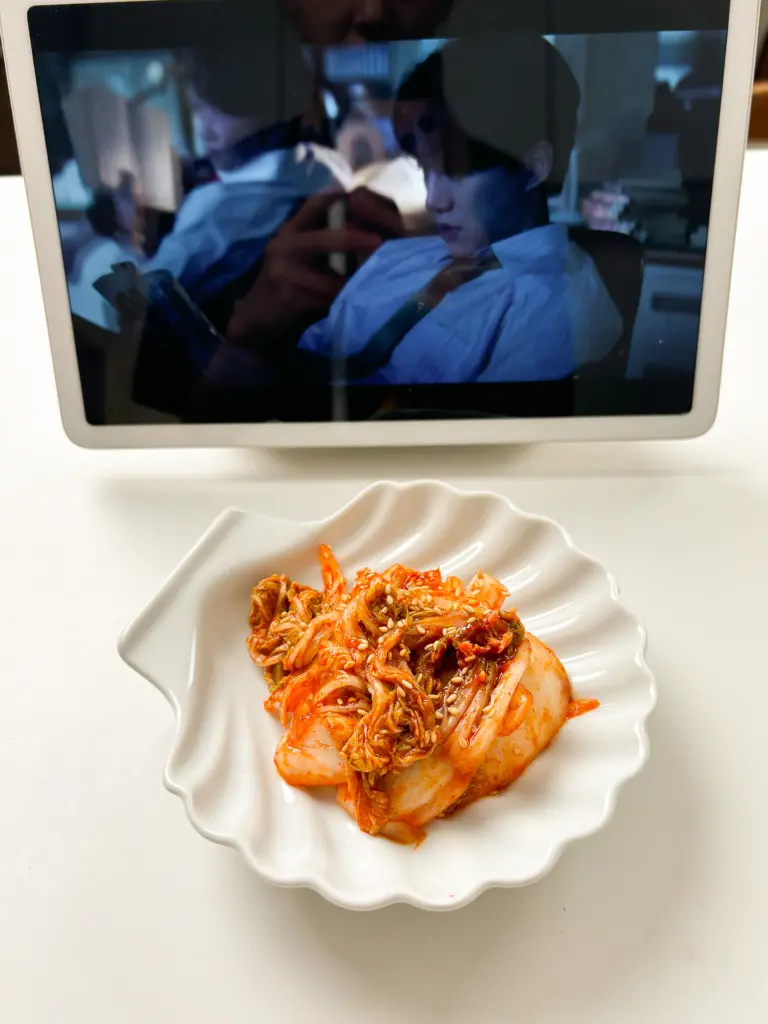
Why It’s Perfect for Beginners
Geotjeori is extremely simple to make. Today, I used only cabbage, garlic, and green onions. For seasoning, just add Korean fish sauce, gochugaru (Korean red pepper flakes), and sugar, and you have authentic kimchi—even outside Korea.
For first-time kimchi makers, salting cabbage for 10 hours and mixing multiple ingredients to create a thick seasoning paste can be difficult. This fresh kimchi recipe uses the simplest ingredients and is the easiest way to make homemade kimchi.
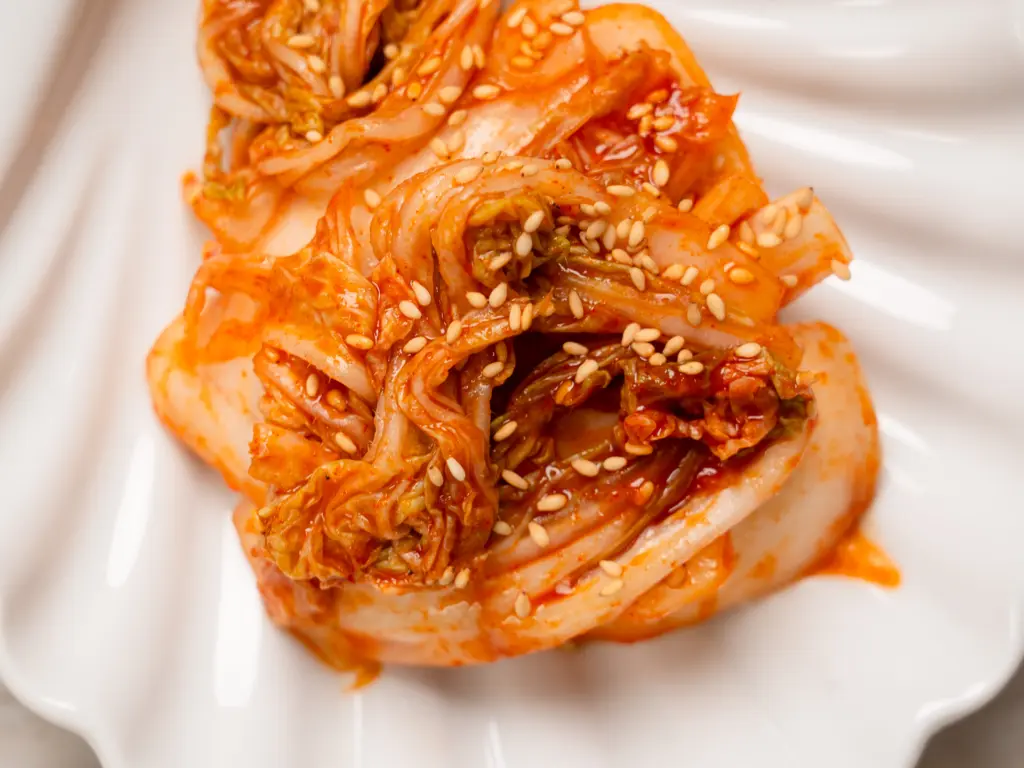
Ingredients for Geotjeori (Fresh Kimchi)
Main Ingredients
- Napa cabbage – the base of the kimchi, lightly salted for crispness
- Gochugaru (Korean red pepper flakes) – gives the kimchi its signature spiciness and color
- Green onions (or scallions) – adds freshness and mild flavor
- Garlic – for depth and aroma
- Plum syrup (maesil cheong) – optional, adds deep umami
- Korean fish sauce (aekjeot) – provides umami and seasoning
- Sugar and salt – balance flavor and aid in slight pickling

Ingredient Substitutions for Non-Korean Kitchens
- Fish sauce: If you don’t have Korean aekjeot (fish sauce), you can substitute it with Southeast Asian fish sauce. However, the saltiness may vary, so adjust the amount while tasting the seasoning.
- Plum syrup (maesil cheong): Plum syrup is a must-have in Korean kitchens for adding a slight acidity and fruity flavor to kimchi, enhancing umami. It gives depth to the dish, so it’s highly recommended to have it on hand. If you don’t have it, you can skip it or replace it with a very small amount of sugar.
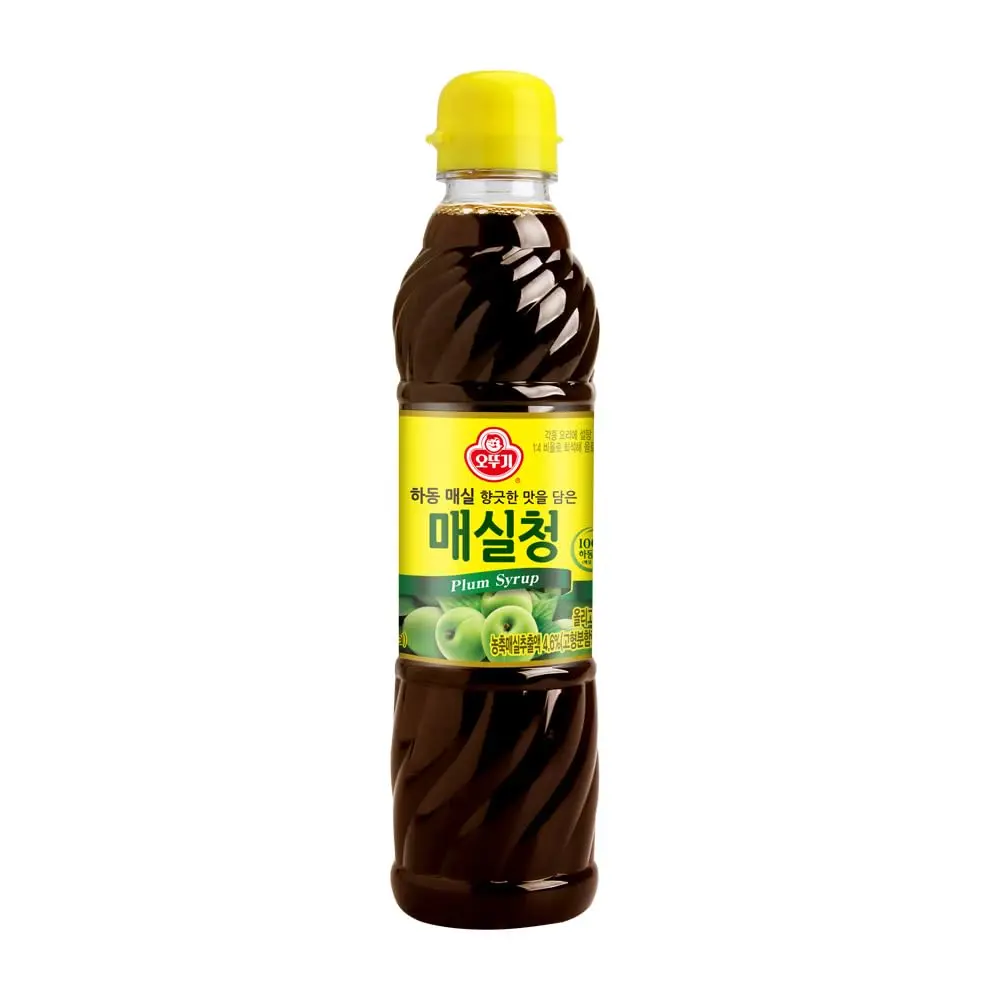
- Green onions: Scallions may be hard to find outside Korea, in Europe or the US. In that case, you can use thinly sliced leeks. If unavailable, you can omit them.
Optional Add-Ons for More Flavor
- Toasted sesame seeds: They add nuttiness, texture, and visual appeal. You can omit them if you don’t have any.
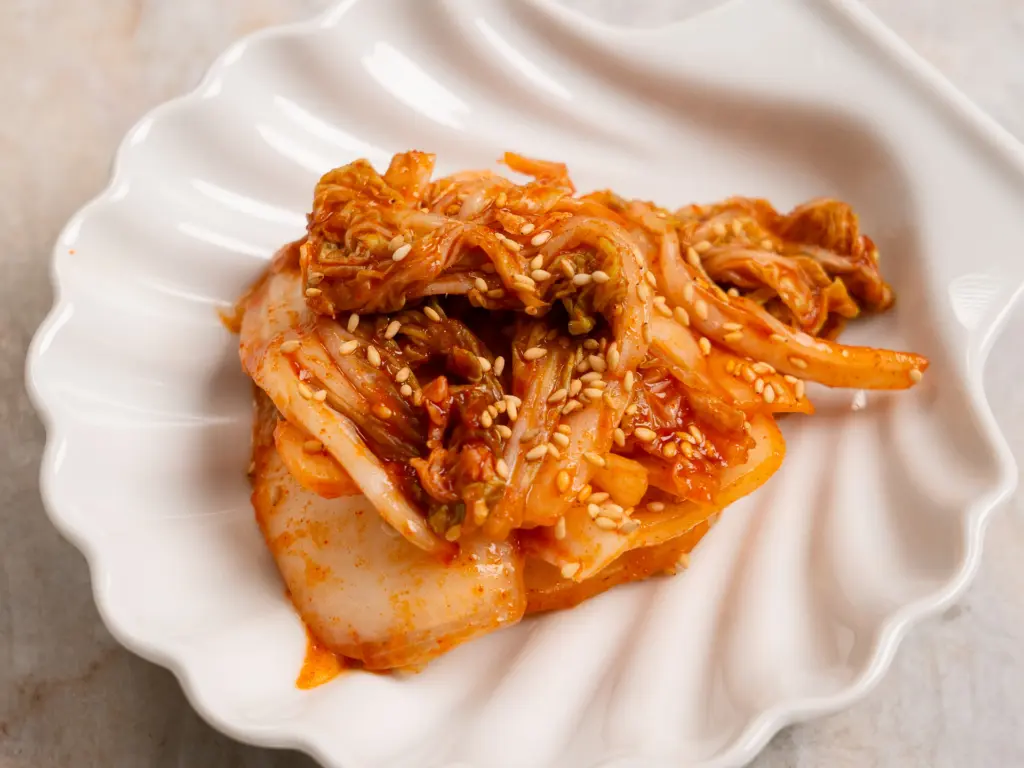
How to Make Geotjeori Kimchi – Step-by-Step Recipe
Step 1. Prepare and Salt the Cabbage
- Cut a small napa cabbage in half. Remove the innermost small leaves and set them aside. Slice the remaining cabbage diagonally into bite-sized pieces.
- Sprinkle 0.5 tbsp sugar and 1 tbsp salt evenly over the cabbage. Let the cabbage sit for 30 minutes to soften. After 30 minutes, bend a piece of cabbage to check if it’s properly salted. If it bends easily, it’s ready.
- Rinse the salted cabbage under water and squeeze out excess moisture thoroughly. This is important because leftover water will make the seasoning taste weak.
Step 2. Make the Kimchi Seasoning (Yangnyeom)
Mix the following ingredients to make the seasoning:
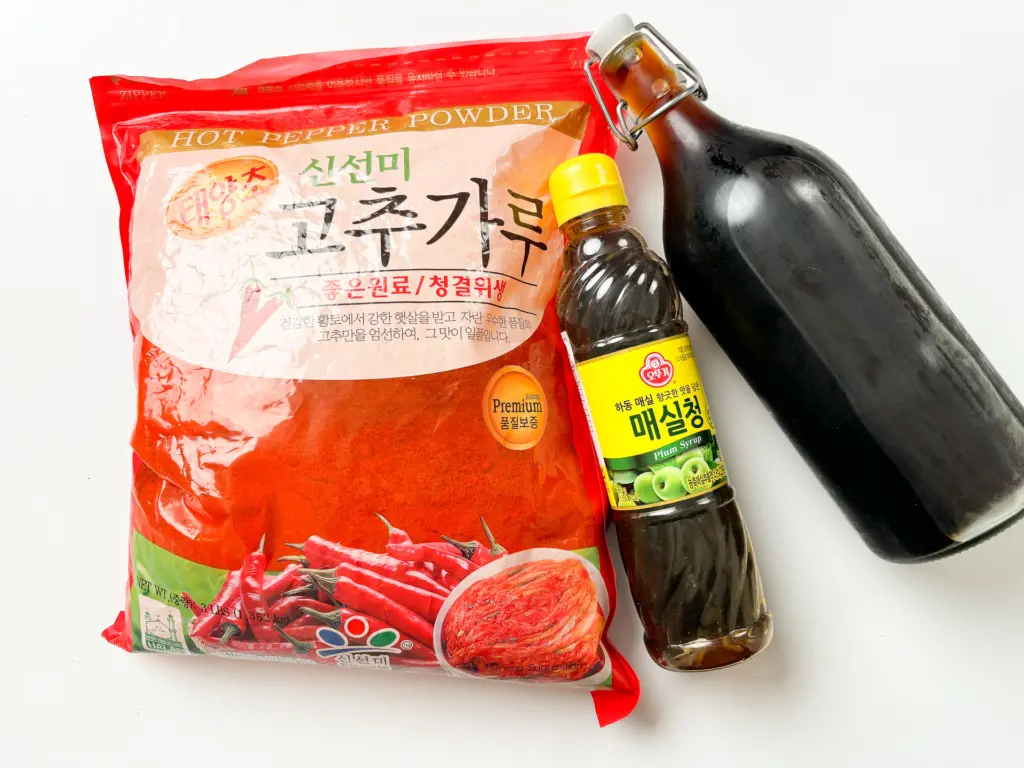
- 2 tbsp gochugaru (Korean red pepper flakes)
- 0.7 tbsp sugar
- 3 tbsp Korean fish sauce (aekjeot)
- 1 tbsp plum syrup (maesil cheong)
If you don’t have plum syrup, you can skip it or add 0.2 tbsp extra sugar instead.

- 1 tbsp minced garlic
- A pinch of MSG (optional)
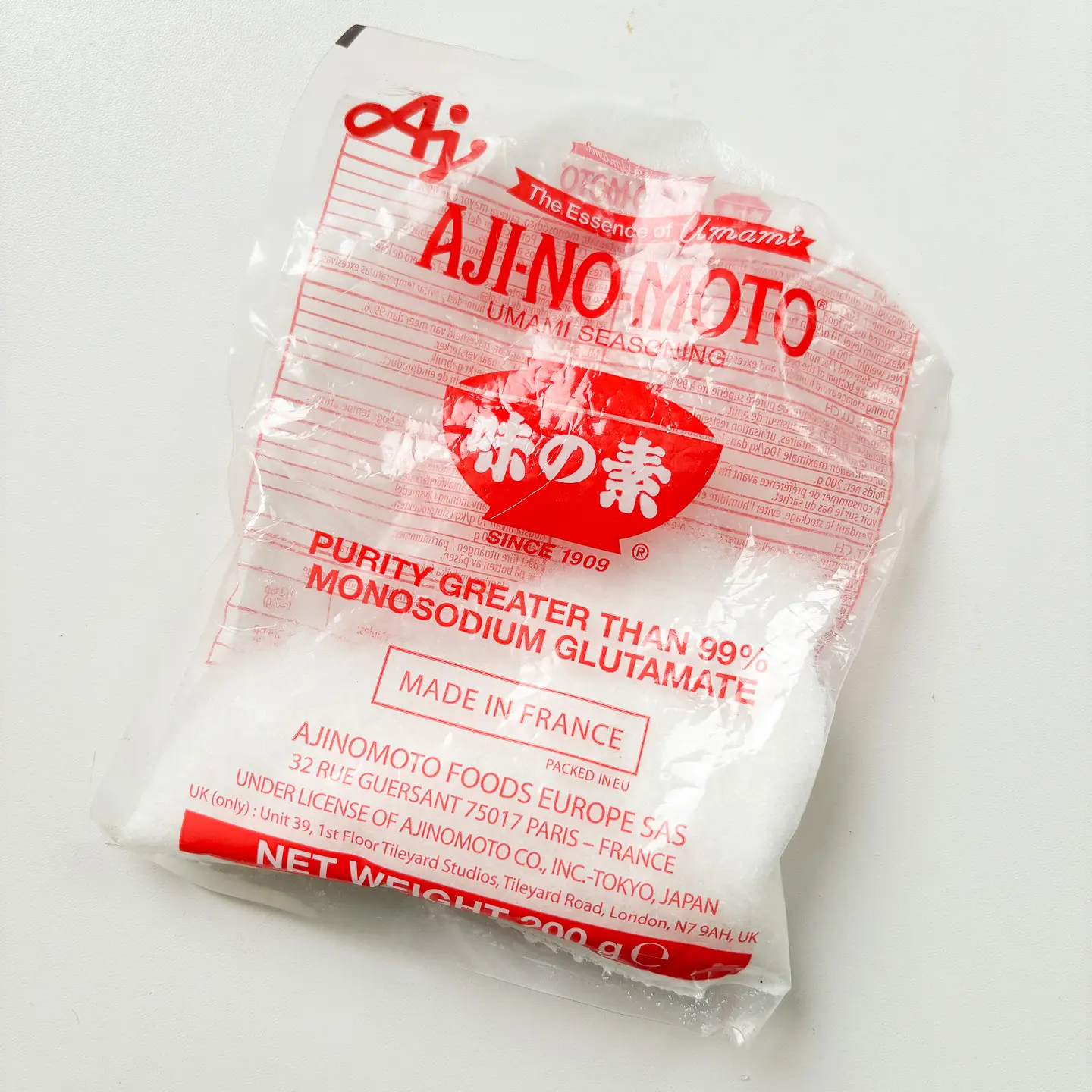
Step 3. Mix and Combine – Gently Toss for Fresh Texture
- Add the seasoning to the cabbage and mix until evenly coated.
- Cut 1/4 bunch of green onions into large pieces and fold them gently into the cabbage.
- Caution: Do not mix too hard, or the green onions may release a strong raw flavor. Just fold gently.
- If green onions are unavailable, thinly sliced leeks can be used instead.
- Finish by sprinkling toasted sesame seeds on top (optional).
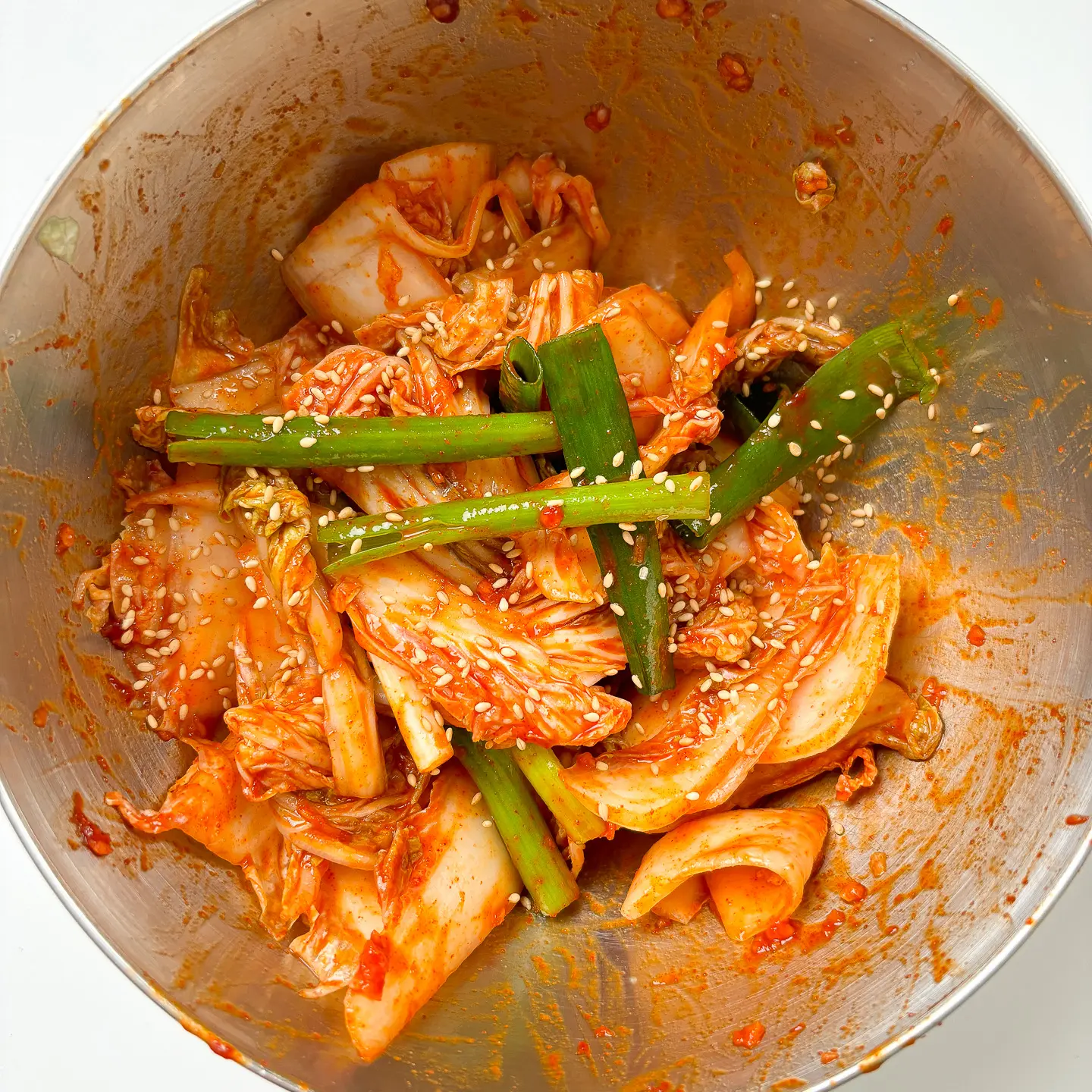
Tips for Perfect Quick Fresh Kimchi
Squeeze Out the Cabbage Water Thoroughly
After salting the cabbage, rinse it once under water. Squeeze out the excess moisture completely. This step is important because leftover water can make the seasoning watery and the kimchi taste bland.
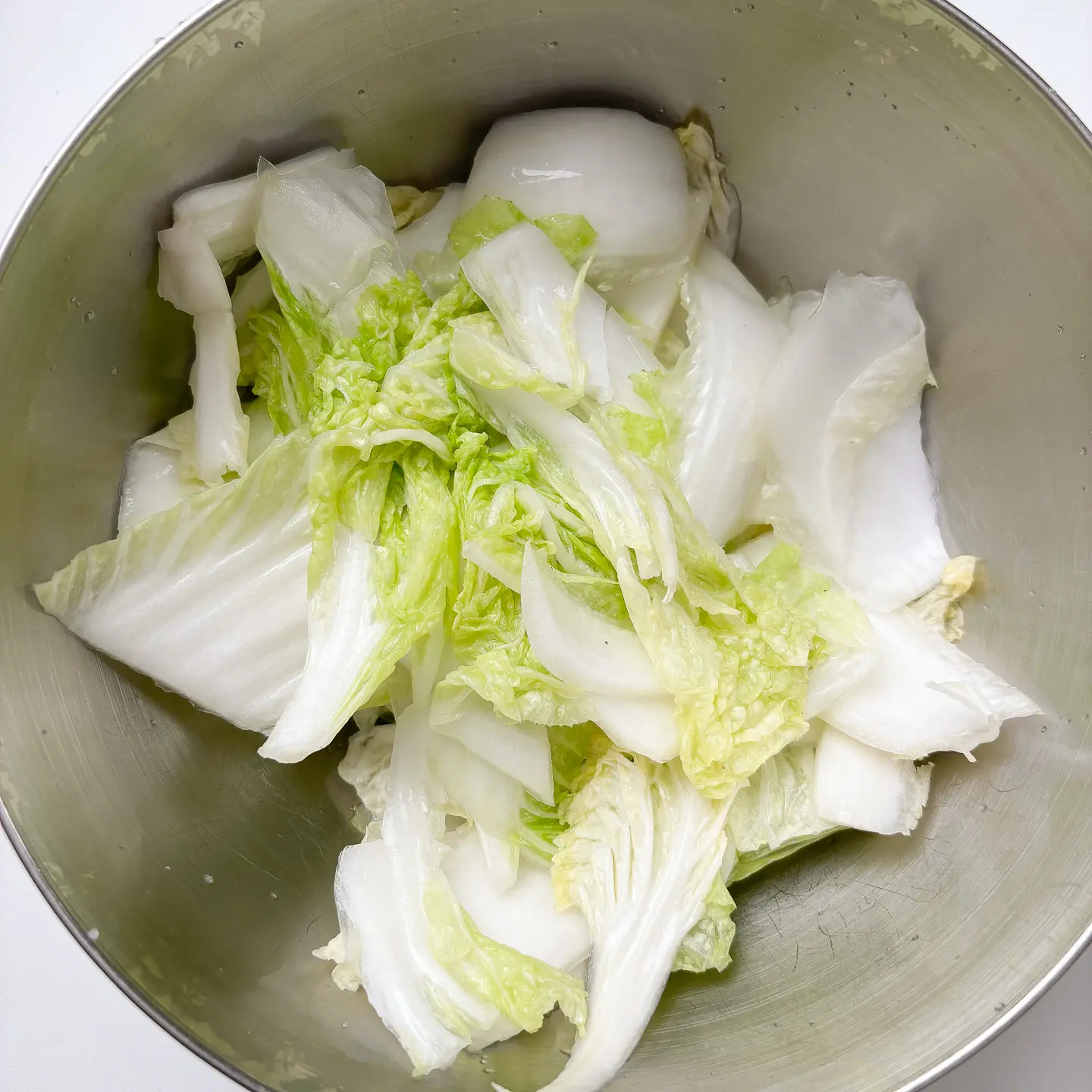
Adjusting the Spice Level for Beginners
- You can reduce the amount of seasoning to control the spiciness.
- Alternatively, use half gochugaru (Korean red pepper flakes) and half paprika powder. This method changes the authentic kimchi flavor, so as a Korean, I wouldn’t personally recommend it.
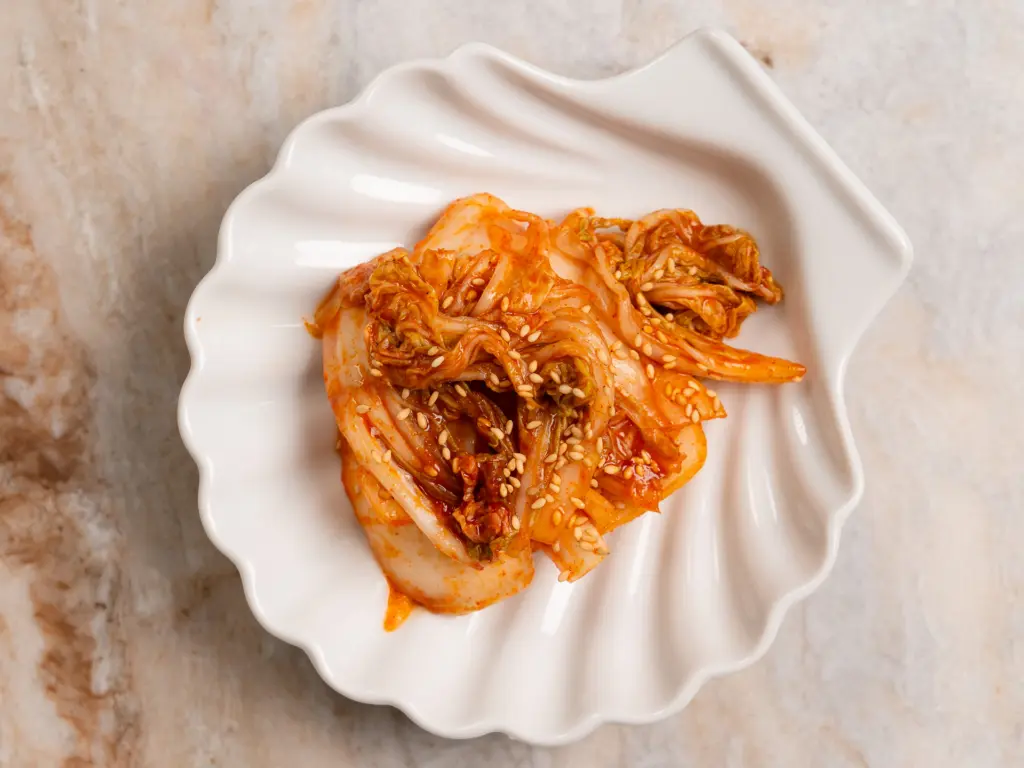
Serving Ideas – What to Eat with Geotjeori
Bossam (Boiled Pork)
In Korea, freshly made Geotjeori is often served with boiled pork. The rich, tender pork pairs perfectly with the crisp and spicy kimchi. The fresh kimchi also balances the richness of the meat.
Garlic Bossam (Korean Pork Wraps)
Kalguksu (Korean Noodle Soup)
Many Korean noodle restaurants serve freshly made Geotjeori instead of fully fermented kimchi. The fresh, crunchy kimchi complements the rich broth and soft noodles much better than sour, aged kimchi.

Boiled Chicken
Geotjeori goes well with clear soups. Especially with boiled chicken dishes, the mild chicken broth and the spicy, crunchy kimchi create a harmonious flavor.
North Korean Food: Braised Chicken (Easier Than Samgyetang)
Rice
Geotjeori is delicious even when eaten simply with steamed white rice, letting the fresh, crisp taste shine.

FAQs about Fresh Kimchi, Geotjeori
What is fresh kimchi called?
Fresh kimchi is called Geotjeori in Korean.
What is the difference between fresh kimchi and regular kimchi?
Fresh kimchi (Geotjeori) is lightly salted and mixed with seasoning just before eating, keeping the crisp texture and fresh flavor.
Regular kimchi is fully salted and fermented, which results in a softer texture and a more sour, aged taste. Geotjeori is also less salty and slightly sweeter, making it ideal for immediate consumption.
Can you eat kimchi without fermenting it?
Yes! You can make kimchi that doesn’t require fermentation, like the Geotjeori recipe in this blog. Even traditionally fermented kimchi, such as kimjang kimchi, can be eaten fresh on the day it’s prepared—often served with dishes like bossam (boiled pork). You can refer to today’s blog for a bossam serving suggestion.
Can fresh kimchi be fermented?
No. fresh kimchi (Geotjeori) is meant to be eaten immediately and cannot be fermented. It contains less fish sauce than regular kimchi, so it doesn’t have enough salt to support fermentation. Its lower salt content and higher sugar content also mean it’s not suitable for long-term storage.
What is the shelf life of fresh kimchi?
Fresh kimchi (Geotjeori) is best eaten on the same day. Over time, the cabbage releases water, making the seasoning watery and reducing the flavor. For the best taste, consume it fresh and crunchy.
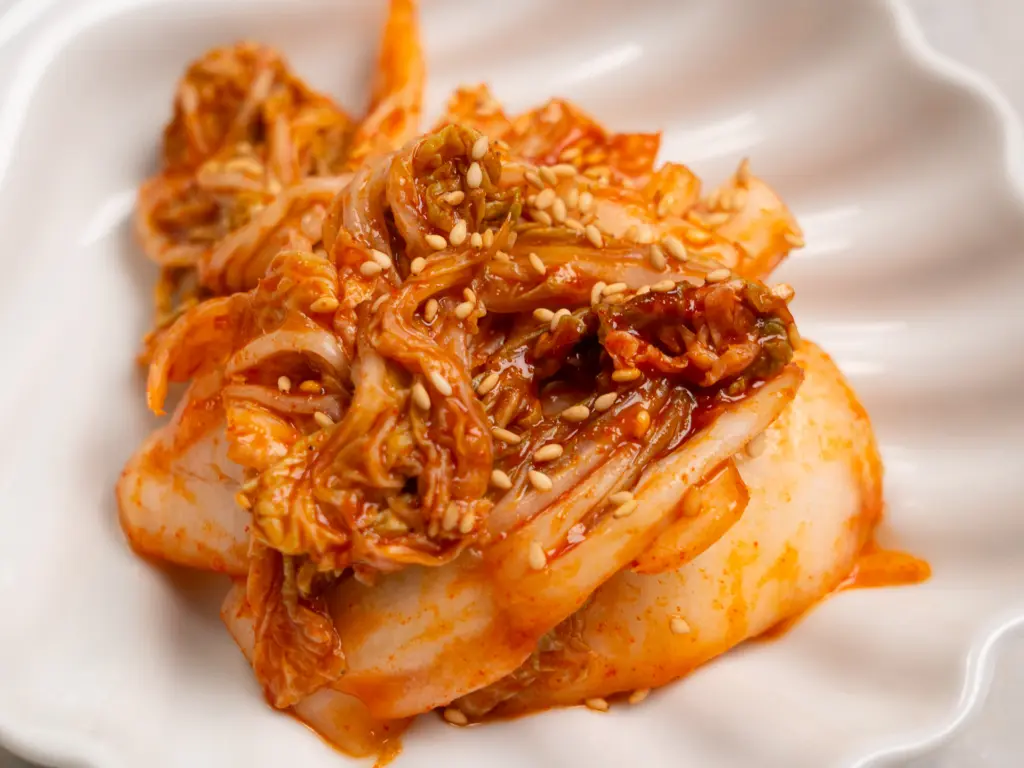
Non-Fermented Geotjeori Kimchi (Quickest Homemade Kimchi)
Equipment
Ingredients
- 1/2 small napa cabbage
- 1 tbsp salt (for salting cabbage)
- 0.5 tbsp sugar (for salting cabbage)
Fresh Kimchi Seasoning
- 2 tbsp gochugaru (Korean red pepper flakes)
- 0.7 tbsp sugar
- 3 tbsp Korean fish sauce (anchovy aekjeot)
- 1 tbsp plum syrup (maesil cheong) – optional: if you don't have it, skip or add 0.2 tbsp extra sugar
- 1 tbsp minced garlic
- 1 pinch MSG (optional)
- 1/4 green onions
- 1 tbsp toasted sesame seeds (optional)
Instructions
- Cut the napa cabbage in half.
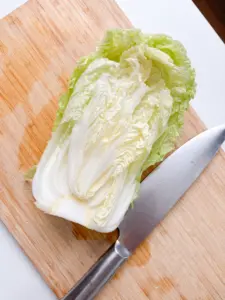
- Remove the innermost small leaves and set them aside. Slice the remaining cabbage diagonally into bite-sized pieces.

- Sprinkle 1 tbsp salt and 0.5 tbsp sugar evenly over the cabbage and let it sit for 30 minutes to draw out moisture.
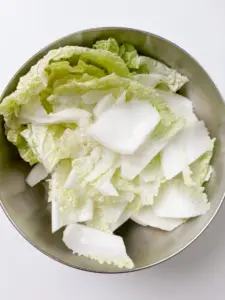
- Rinse the salted cabbage thoroughly in water and squeeze out as much water as possible — any leftover moisture will make the seasoning taste weak.
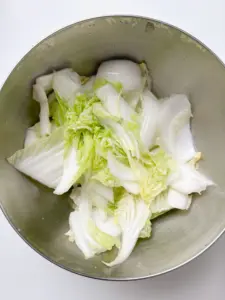
- In a mixing bowl, combine all kimchi seasoning ingredients: gochugaru, sugar, fish sauce, plum syrup, minced garlic, and MSG. Mix well.– If you don’t have plum syrup, skip it or add 0.2 tbsp more sugar.
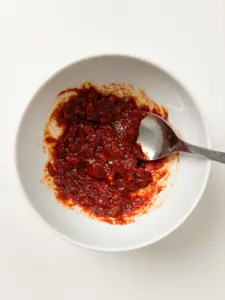
- Add the drained cabbage to the seasoning and mix until evenly coated.
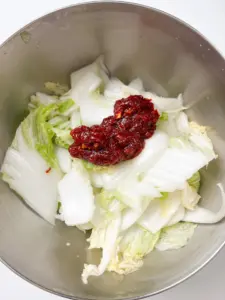
- Cut 1/4 bunch of green onions into large pieces and gently mix them in. Avoid mixing too hard, as it can make the green onions smell grassy.– If you don’t have green onions, you can use thinly sliced leeks instead.

- Finish with a sprinkle of toasted sesame seeds on top (optional).
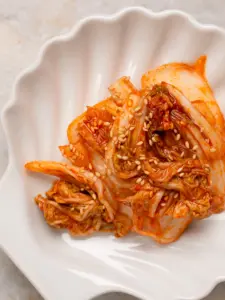
Nutrition
Disclosure: Blonde Kimchi is part of the Amazon Services LLC Associates Program, an affiliate advertising program that allows websites to earn advertising fees by linking to Amazon.com and promoting products.

